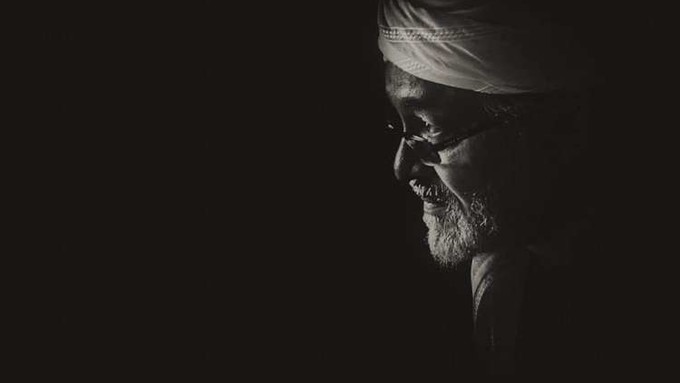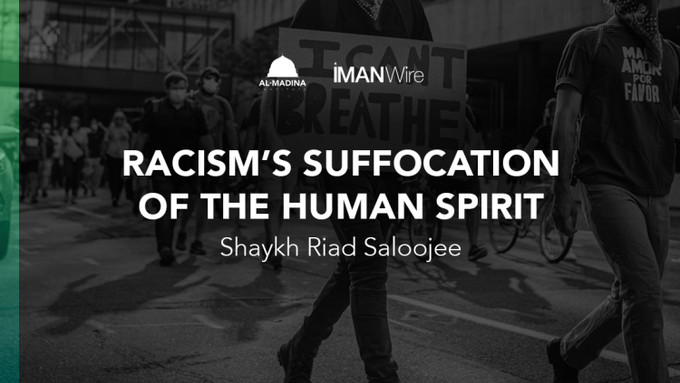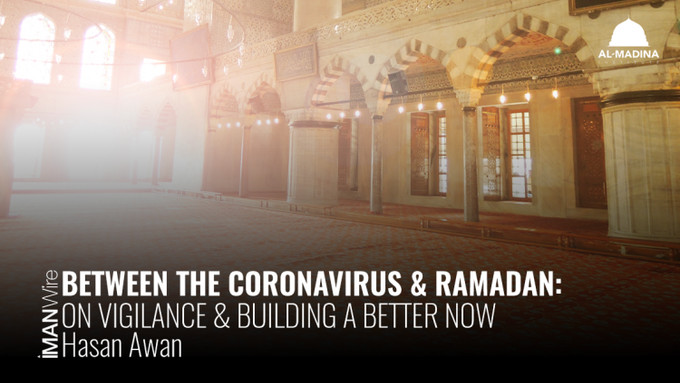The Consumption of Corpses in Social Media
In the first section of his introductory text on the basics of Islamic jurisprudence the Algerian scholar Imam ‘Abdur Rahmān al-Akhḍarī mentions a ruling that most Muslims today seem to be heedless of:
“…And to not engage in any action until he or she knows the ruling of God pertaining it, and [in order to know it] to ask the scholars…”
Sadly, there is a phenomenon that has become widespread among Muslims in social media websites, which is to share graphic images of the dead from conflict regions such as Syria and Gaza. The question that presents itself is: have any of those Muslims who share these graphic images irrespective of their intentions stopped for a moment to inquire about the ruling for doing so?
Allah tells us in the Qur'an about the aftermath of Cain killing Abel:
“God sent a raven to scratch up the ground and show him how to cover his brother’s corpse and he said, ‘Woe is me! Could I not have been like this raven and covered up my brother’s body?’ He became remorseful.” [5:31]
The Arabic word used in this verse is sao’a, which is usually translated to mean nakedness, and literally means that which harms the one who sees it. It is mentioned twice in the verse, which indicates an increased level of emphasis. The Andalusian Jurist Abu Bakr ibn al-‘Arabi (d. 1148) mentions in his Quran exegesis The Rulings of the Quran that sao’a means nakedness and when the body rots it all becomes a sao’a. The Persian scholar known as the Imam of scholars of exegesis, Imam Muhammad ibn Jarir al-Tabari (d. 923), said that although the word sao’a could mean the nakedness understood to be the private parts, the people of interpretation said that in this verse it means the corpse. The most directly applicable commentary on this verse to our modern times is that from the Tunisian scholar Imam Muhammad al-Tahir ibn ‘Ashur (d. 1973) who said in his commentary:
“Sao’a is all that would be troubling to see [in this context], such as the change in smell of the killed and mutilation of his or her body.”
These are but a few representative samples of what the scholars have said about this verse. The understood ruling from them is that the divine intent for the deceased is to cover them, because their bodies have attained the same ruling as that for the private parts of the living. In a Hadith narrated by Imam Ahmad in his collection, on the authority of Alī ibn Abi Talib (may Allah be pleased with him), the Beloved ﷺ told him that among the matters that should never be delayed is the burial of the deceased. For these reasons the scholars have said that the ennoblement of the deceased is in their burial.
Some may object by appealing to the goal intended from sharing graphic images. The idea is that such sharing would raise awareness in a propaganda war against the aggressors. However, this understanding follows more from an adherence to pragmatic and utilitarian philosophies than to an Islamic ethos. Moreover, as Suzanne Moore mentioned in her article in the Guardian, the sharing of dead corpses has become a political symbol for public consumption. The justification many Muslims use to share such graphic images is similar in nature to the justifications used by Muslims who engage in suicide bombings under the guise of what they call “Jihad”. They are always based on political goals and never rooted in Islamic sources. For many Muslims, the exposure of the atrocities committed in Syria or Gaza can only be done through images, and this trumps the sanctity of those who suffered and their families.
Religious rulings aside, one has to reflect on the Hadith of the Beloved ﷺ who said:
“None of you truly believes unless you love for your brother (or sister) what you love for yourselves.”
The corpses whose images some Muslims are so eager to share to “raise awareness” belong to parents and children of other human beings. Aside from the fact that consent to share such images was never obtained from the deceased prior to their death or from their family members, how would the sharer of images today feel if pictures of their deceased family members were publicly shared all over social media without regard to their approval or lack thereof? This is not to mention that the level of bombardment from such images can desensitize one to the extent that they can view them while having lunch or a cup of coffee.
There is much more than can be said about this phenomenon. It is a sad state of affairs when Muslims lose perspective on the sanctity of the human being, and begin to blindly participate in turning an ennobled creation of God from an end into a means towards political goals. We all need a moment of reflection over how we go about our actions.
Finally, whatever is impermissible to do is also impressible to look at. If one comes across graphic images of corpses, they must lower their gaze and change the page. For those on Twitter, you can change your settings so your timeline does not automatically preview images. If you have shared graphic images in the past, you should delete them. We all have enough sins on our shoulders, and we certainly do not need to keep a counter going through having others adding to it by looking at what we post on our timelines.
May Allah guide us all to the straight path.
Life & Culture Related Articles

Shaykh Seraj Hendricks: Obituary
An internationally recognised Islamic scholar, who saw spirituality, justice, and knowledge as integral to an authentic religious existence. Shaykh Seraj Hendricks, who passed away on the 9th of July 2020 at the age of 64, was a scholar of international repute, able to communicate and engage on the level of state leaders, religious scholars and the broader public.

Racism’s Suffocation of the Human Spirit
I can’t breathe. George Floyd’s last words, conveying, verbatim, Eric Garner’s last words, with echoes through a long chain of souls – Breonna Taylor, Michael Brown, Walter Scott, Freddie Grey, Jamar Clark, Alton Sterling, Stephon Clark and Botham Jean – is a testamentary call that should pierce every Muslim’s mind and heart.

Between the Coronavirus & Ramadan: On Vigilance & Building a Better Now
I pray that, as we continue to lovingly welcome and vigilantly discover the blessings inherent in Ramadan upon us, we awaken to all the moments and especially the moment that Allah has chosen to place us. A quotation from Charles Dickens, the opening to one of his novels, is worth reflecting on: “It was the best of times, it was the worst of times.”